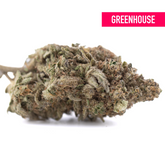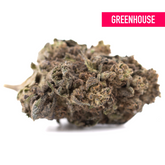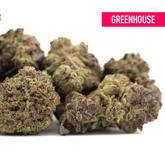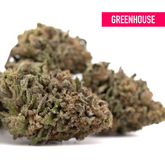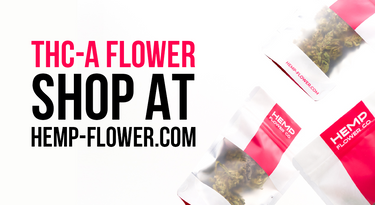Top Shelf THCA Flower: What Makes Premium Cannabis Worth the Price

When shopping for THCA flower, you've probably noticed a significant price difference between budget options and premium, top-shelf selections. Some products are available for $50 an ounce, while others command $200 or more for the same quantity. But what exactly are you paying for? Today, we're breaking down what makes high THCA hemp flower worth the investment, from cultivation techniques to strain-specific characteristics.
Understanding the difference between bargain-bin cannabis and premium selections isn't just about justifying costs—it's about knowing what you're consuming and getting the experience you desire. Whether you're a seasoned enthusiast or new to THCA products, this comprehensive guide will help you identify quality and make informed purchasing decisions.
The Foundation: Cultivation Methods Matter
The foundation of top shelf THCA flower wholesale quality starts long before harvest—it begins with how the plant is grown. The cultivation method is perhaps the single most important factor determining the final product's quality, potency, and overall experience.
Indoor vs. Outdoor Growing: The Critical Distinction
Indoor THCA flower represents the pinnacle of controlled cultivation. When you step into a professional indoor grow facility, you're entering what essentially amounts to a high-tech laboratory designed specifically for cannabis cultivation. These environments allow cultivators to fine-tune every single environmental factor that affects plant development.
Temperature control in indoor facilities maintains optimal ranges throughout the plant's lifecycle—typically between 70-85°F during vegetative growth and slightly cooler during flowering. Humidity is precisely regulated, preventing mold and mildew while optimizing resin production. Light cycles can be perfectly controlled using advanced LED or HPS systems, providing the ideal spectrum and intensity at each growth stage. Even CO2 levels can be enhanced to boost photosynthesis and overall plant vigor.
This precision results in consistently dense, resinous buds with optimal cannabinoid profiles. The trichome development in THCA indoor flower is notably superior, with more uniform coverage and higher concentration of active compounds. Indoor cultivation also allows for year-round production, meaning you can access your favorite strains regardless of season.
While outdoor growing can certainly produce quality flower—and has its own advantages in terms of sustainability and natural terpene development—indoor cultivation eliminates variables like unpredictable weather patterns, pest pressures, and seasonal limitations. Outdoor crops face challenges from extreme temperatures, excessive rain, high winds, and the full spectrum of regional pests and diseases. Indoor growers can prevent these issues before they start.
The downside? Indoor cultivation is significantly more expensive. Energy costs for lighting, climate control, and ventilation are substantial. This is a primary reason why THCA indoor flower commands premium prices—you're paying for that level of control and consistency.
Organic Practices: Clean Growing for Discerning Consumers
Premium producers often utilize organic hemp flower cultivation methods, avoiding synthetic pesticides, herbicides, and fertilizers. This commitment to organic growing isn't just marketing hype—it represents a fundamental philosophy about what goes into your body.
Organic cultivation relies on natural inputs: compost teas, beneficial microorganisms, integrated pest management using predatory insects, and organic soil amendments. These methods work with nature rather than against it, building soil health and plant resilience from the ground up. The result is plants that may grow slightly slower but develop more complex root systems and more robust natural defenses.
These clean-growing practices produce safer products, but the benefits extend beyond safety. Many experienced consumers report that organic hemp flower offers more complex terpene profiles and a smoother, cleaner smoking or vaping experience. The absence of synthetic residues means you're tasting pure cannabis—nothing more, nothing less.
The organic certification process through organizations like USDA Organic or CCOF (California Certified Organic Farmers) is rigorous and expensive. Growers must maintain detailed records, undergo regular inspections, and follow strict protocols for years before receiving certification. These requirements contribute to higher production costs, but the purity and peace of mind are worth it for discerning consumers who care about what they put in their bodies.
Additionally, organic growing often aligns with sustainable and regenerative agricultural practices that benefit the environment. For consumers who value both personal and planetary health, this ethical dimension adds another layer of value to premium organic THCA flower.
The Strain Makes All the Difference
Not all THCA flower is created equal, and genetics play an absolutely crucial role in determining quality, effects, potency, and overall experience. This is where the art and science of cannabis breeding truly shines.
Top-shelf cultivators work with legendary genetics that have been refined over decades. These aren't random seeds or unstable crosses—they're carefully selected phenotypes from proven lineages with distinct characteristics and reliable performance.
Wedding Cake THCA Flower: Sweet Sophistication
Wedding Cake THCA flower has become one of the most sought-after strains in the premium market, and for good reason. This indica-dominant hybrid, also known as Pink Cookies, is a cross between Cherry Pie and Girl Scout Cookies—two powerhouse strains in their own right.
What makes Wedding Cake special is its incredible terpene profile dominated by limonene, caryophyllene, and myrcene. This combination creates its signature sweet, vanilla-like aroma with tangy undertones that many describe as resembling actual wedding cake frosting. The flavor follows through beautifully, offering a smooth, dessert-like experience that's become legendary among connoisseurs.
Beyond the sensory appeal, Wedding Cake offers balanced effects that combine physical relaxation with mental clarity—making it versatile for both daytime and evening use. Premium Wedding Cake THCA flower often tests above 25% THCA, delivering potent effects in a delicious package.
OG Kush THCA Flower: The Timeless Classic
If Wedding Cake is the trendy newcomer, OG Kush THCA flower is the established classic that built the modern cannabis industry. Originating in Florida in the early 1990s before becoming a California staple, OG Kush has influenced countless hybrids and remains a gold standard for quality.
OG Kush is characterized by its complex aroma profile featuring earthy, pine, and woody notes with hints of lemon and fuel. The terpene profile is rich in myrcene, limonene, and caryophyllene, creating what many consider the quintessential "cannabis" smell. It's the strain by which many others are judged.
The effects of premium OG Kush THCA flower are equally legendary—offering potent relaxation combined with euphoric mental effects. It's these reliable, well-rounded effects that have made OG Kush an industry standard and a parent strain to countless popular hybrids.
Cultivating true OG Kush properly is challenging. It requires careful attention to nutrient levels, precise environmental controls, and patience through its longer flowering period. This difficulty is part of what makes authentic, high-quality OG Kush command premium prices.
White Widow THCA Flower: European Excellence
White Widow THCA flower represents European cannabis breeding at its finest. Developed in the Netherlands in the 1990s, White Widow quickly gained international acclaim and helped establish Amsterdam's reputation as a cannabis capital.
White Widow is immediately recognizable by its incredible trichome production—the buds literally appear white due to the thick coating of crystalline resin glands. This heavy resin production translates to high cannabinoid and terpene content, making White Widow both potent and flavorful.
The effects of White Widow THCA flower lean toward the cerebral and energizing side, making it popular for daytime use. Users report increased creativity, focus, and social energy—quite different from the heavy relaxation of indica-dominant strains. The aroma and flavor profile feature earthy, woody notes with hints of spice and subtle sweetness.
Like OG Kush, White Widow has spawned numerous successful offspring and remains popular decades after its introduction—a testament to its quality genetics.
Why Premium Genetics Cost More
These premium strains command higher prices because they're genuinely more difficult to cultivate. They often require longer flowering times—sometimes 9-11 weeks compared to 7-8 weeks for faster-growing varieties. This extended timeline means higher costs for indoor growers running climate-controlled facilities.
Additionally, these genetics have been perfected over generations of selective breeding. The stable phenotypes that produce consistent results are the product of years of work by skilled breeders. When you purchase premium high THCA hemp flower from these legendary strains, you're benefiting from decades of refinement.

Visual and Sensory Indicators of Quality
One of the most valuable skills for any cannabis consumer is learning to identify quality before making a purchase. You can often spot top shelf THCA flower wholesale quality before you even try it. Here's what to look for when evaluating THCA flower:
Trichome Coverage: The Crystal Coating
Trichomes are the tiny, mushroom-shaped glands that cover quality cannabis flowers. These structures contain the cannabinoids (like THCA) and terpenes that create the plant's effects and aroma. Premium flower should sparkle with a thick layer of crystalline trichomes that make the buds appear frosted or sugar-coated.
Under magnification, quality trichomes appear clear to milky white, with rounded, mushroom-like heads. Brown or absent trichomes indicate old flower or poor growing conditions. The density and distribution of trichomes directly correlate with potency—more trichomes mean higher concentrations of active compounds.
When examining indoor THCA flower, you should see trichomes covering not just the outer surface but extending throughout the bud structure. This thorough coverage is a hallmark of properly grown indoor flower.
Bud Structure: Density and Formation
The physical structure of cannabis buds reveals a lot about growing conditions and overall quality. Top-shelf buds are dense but not compressed, with clearly visible calyxes (the tear-drop shaped structures that form the bud) and minimal stem material. The buds should have natural density—they shouldn't feel rock-hard (which can indicate improper drying or additives) or airy and loose (which suggests poor growing conditions).
Indoor growing consistently produces tighter, more uniform bud structure compared to outdoor cultivation. THCA indoor flower typically features compact, well-formed colas with even development throughout. You shouldn't see excessive leaf material or stems—premium flower is hand-trimmed to remove excess plant material while preserving trichome coverage.
The cola shape and bud formation also indicate the strain's genetics and growing conditions. Sativa-dominant strains naturally form more elongated, finger-like buds, while indica-dominant varieties produce denser, rounded structures. Regardless of structure, quality flower maintains consistent formation throughout.
Color and Freshness: Visual Appeal
Premium THCA flower displays vibrant, eye-catching colors that immediately signal freshness and quality. Look for rich greens ranging from lime to forest green, often with purple or blue hues from anthocyanin pigments. Orange, amber, or reddish pistils (the hair-like structures) should be vivid and abundant, not brown or shriveled.
Color tells you about freshness, genetics, and curing quality. Never purchase flower that appears brown, yellow, or has bleached white patches—these indicate oxidation, light damage, or age. Premium flower maintains its color because it's properly cured and stored away from light and excessive heat.
Fresh high THCA hemp flower also has the right moisture content—not too dry and not too wet. It should feel slightly springy when gently squeezed, not crumble to dust or feel damp. Properly cured flower maintains this optimal moisture level for months when stored correctly.
Aroma: The Nose Knows
Perhaps no single factor indicates quality as immediately as aroma. High-quality THCA flower has a complex, pungent aroma that should be noticeable the moment you open the container. The scent profile should be rich and multi-layered, with distinct notes that match the strain's terpene profile.
If cannabis smells like hay, grass clippings, or has very little scent at all, it's definitely not top-shelf. These subdued aromas indicate improper curing, old flower, or poor growing conditions that failed to develop the plant's full terpene potential.
Premium strains like Wedding Cake THCA flower should have pronounced sweet and tangy notes, while OG Kush THCA flower should deliver those classic earthy, pine, and fuel aromas. The intensity and complexity of the aroma directly correlate with terpene content—and terpenes significantly influence the flower's effects through the entourage effect.
Testing and Transparency: Know What You're Getting
Premium THCA flower comes with comprehensive lab testing that goes far beyond basic compliance requirements. This transparency is a hallmark of quality producers who have nothing to hide and everything to prove.
Potency Testing: Confirming the Numbers
Third-party potency testing confirms high THCA percentages and provides a complete cannabinoid profile. Premium indoor THCA flower typically tests between 20-30% THCA, with some exceptional phenotypes reaching even higher levels.
But potency isn't just about the headline number. Complete cannabinoid testing also reveals the presence of other compounds like CBD, CBG, CBN, and minor cannabinoids that contribute to the overall effects. This full spectrum profile helps consumers understand what to expect and compare products accurately.
Terpene Analysis: Beyond the Numbers
Advanced testing identifies and quantifies the aromatic compounds that give each strain its unique character. Terpene analysis reveals the presence of compounds like myrcene (earthy, musky), limonene (citrus), caryophyllene (spicy, peppery), pinene (pine), and dozens of others.
This information is valuable because terpenes don't just create aroma—they directly influence effects through what scientists call the entourage effect. The same THCA percentage can produce vastly different experiences depending on the terpene profile. Premium producers provide detailed terpene analysis so consumers can choose products that match their desired effects.
Contaminant Screening: Safety First
Top-shelf producers test for pesticides, heavy metals, mold, mycotoxins, and residual solvents. This comprehensive screening ensures the flower is safe for consumption—particularly important for individuals with compromised immune systems or other health concerns.
Organic hemp flower producers should still conduct contaminant testing to verify their growing practices and ensure no environmental contaminants have affected the crop. Clean test results are a badge of honor that premium producers display prominently.
Moisture Content and Water Activity
Professional testing also measures moisture content and water activity to ensure proper curing and storage. Optimal moisture content (typically 10-12%) prevents mold growth while maintaining flower quality. This technical detail might seem minor, but it's crucial for long-term storage and consistent experience.
COA Transparency
Certificates of Analysis (COAs) should be readily available—either included with the product, accessible via QR code, or posted on the company website. Premium brands make finding test results effortless because they're proud of their quality. If a producer makes it difficult to access testing data, that's a red flag.
The Wholesale Advantage: Smart Buying for Regular Consumers
For regular consumers or retailers, purchasing top shelf THCA flower wholesale can provide access to premium products at better price points while ensuring you never run out of your favorites.
Consistency Across Purchases
Wholesale buying allows you to stock up on your favorite strains from the same batch, ensuring consistency in effects, flavor, and potency across multiple sessions. Batch variation is normal in cannabis cultivation—even the same strain can vary slightly from one harvest to the next. By purchasing larger quantities, you lock in a specific batch's characteristics.
Better Price Per Unit
Volume purchasing typically offers significant per-gram savings without compromising quality. Many premium cultivators offer wholesale programs specifically designed for regular consumers who want to maintain a steady supply of top-shelf flower. These programs maintain the same quality standards as retail products while offering bulk pricing that can reduce costs by 20-40%.
Access to Limited Releases
Wholesale accounts often receive early access to new strains, limited phenotypes, and small-batch releases that sell out quickly at retail. This insider access means you can try unique offerings before they hit the general market.
Storage Considerations
When buying wholesale quantities of high THCA hemp flower, proper storage becomes crucial. Invest in quality storage containers with humidity control (Boveda or Integra packs maintaining 58-62% RH), keep flower in a cool, dark place, and consider vacuum-sealing portions for long-term storage. Properly stored, premium THCA flower maintains quality for 6-12 months or longer.
Why Premium Pricing Exists: Understanding the True Costs
Understanding the economics behind THCA indoor flower pricing helps contextualize why quality products cost more. These aren't arbitrary markups—they reflect real production costs and business realities.
Labor-Intensive Cultivation
Indoor growing requires constant monitoring and adjustment by skilled cultivators. A single grow operation might employ multiple full-time staff members who check plants daily, adjust environmental controls, mix nutrients, train plants, and identify issues before they become problems. This hands-on approach is expensive but essential for premium results.
Hand-trimming quality flower—rather than using machine trimmers that damage trichomes—requires additional labor time. Skilled trimmers can process 1-2 pounds per day, and they need to be paid fairly for their detailed work. This labor cost is significant but necessary for preserving the flower's quality.
Extended Timelines
Premium strains often need longer flowering periods—sometimes 9-11 weeks instead of 7-8 weeks. This extended timeline means growers have fewer harvests per year, increasing the per-unit cost of each plant. Additionally, proper curing takes 2-4 weeks or longer, during which the flower can't be sold but still requires storage space and humidity control.
Patient cultivation and curing separate adequate flower from exceptional flower. Rushing these processes compromises quality—something premium producers refuse to do.
Lower Yields
Quality-focused growing may produce less flower per plant than high-yield commercial approaches. Techniques like careful defoliation, strategic training, and selective harvesting prioritize quality over quantity. Some premium phenotypes naturally produce smaller yields despite their superior characteristics.
Testing Expenses
Comprehensive lab testing adds $200-500 per batch in direct costs. For smaller producers or unique strains, this represents a significant per-unit expense. However, testing is non-negotiable for legitimate operations, and these costs must be recovered in the final price.
Facility Costs
Indoor grow facilities require substantial capital investment and ongoing operating expenses. Industrial lighting, HVAC systems, security, and facility maintenance aren't cheap. Commercial electricity bills for indoor grows can reach thousands of dollars monthly. Premium pricing reflects these operational realities.
Proper Curing and Storage
Top-shelf flower is carefully dried and cured over weeks or months, not rushed to market to improve cash flow. This patient approach requires dedicated curing space with climate control and represents inventory holding costs that budget producers avoid by selling immediately after harvest.
Genetic and Breeding Programs
Premium producers often maintain breeding programs to develop new strains or preserve elite phenotypes. These programs require dedicated space, skilled breeders, and years of work before producing marketable products. The genetic development costs are amortized across product pricing.

Making an Informed Choice
With all this information, how do you decide when premium pricing is worth it for your situation?
When Premium Makes Sense
Invest in top shelf THCA flower wholesale when you're an experienced consumer who can appreciate subtle differences in quality, when you have specific therapeutic needs that require consistent potency and clean products, when you're looking for particular strain characteristics or effects, or when you want the full sensory experience that premium flower provides.
For special occasions, sharing with friends, or trying new strains, premium flower ensures you're experiencing the strain as the breeder intended. The difference in experience between mid-grade and top-shelf flower is significant enough that most consumers notice immediately.
When Budget Options Might Suffice
If you're brand new to cannabis and still developing your palate, mid-grade options might serve you well initially. Once you understand what you enjoy, you can invest in premium versions. Similarly, if you're making edibles or extracts where some subtle characteristics are lost in processing, you might not need the absolute top shelf.
However, even budget-conscious consumers should prioritize clean products with proper testing. Never sacrifice safety for savings—pesticide-laden or moldy flower isn't a bargain at any price.
Frequently Asked Questions
What exactly is THCA and how is it different from THC?
THCA (tetrahydrocannabinolic acid) is the acidic precursor to THC found in raw cannabis plants. When cannabis is heated through smoking, vaping, or cooking, THCA converts to THC through a process called decarboxylation. THCA itself is non-intoxicating in its raw form but converts to psychoactive THC when you use the flower.
How can I tell if THCA flower is actually indoor-grown?
Genuine indoor THCA flower typically has denser bud structure, more uniform appearance, higher trichome coverage, and more consistent size across buds. Indoor flower also tends to have more vibrant colors and lacks the minor imperfections common in outdoor growing (small leaf damage, slight discoloration). Ask your vendor about their cultivation methods and look for transparency in their growing practices.
Are organic and non-organic THCA flower really that different?
Many consumers report that organic hemp flower offers cleaner taste, smoother smoke, and more complex terpene profiles. Scientific evidence supports that organic growing methods produce different chemical profiles compared to conventional cultivation. Beyond sensory differences, organic flower guarantees no synthetic pesticide residues—an important consideration for health-conscious consumers.
How long does premium THCA flower stay fresh?
Properly stored high THCA hemp flower maintains quality for 6-12 months or even longer. Key factors are controlling moisture (58-62% relative humidity), avoiding light exposure, maintaining cool temperatures (60-70°F), and limiting air exposure. Use humidity control packs and opaque, airtight containers for best results.
Is wholesale THCA flower lower quality than retail?
Not at all. Purchasing top shelf THCA flower wholesale simply means buying in larger quantities, typically at better per-unit prices. Legitimate wholesale programs offer the same quality as retail products—you're just committing to larger purchases upfront. This approach works well for regular consumers who've found strains they love.
What THCA percentage should I look for in premium flower?
Top-shelf THCA indoor flower typically tests between 20-30% THCA, with exceptional batches sometimes exceeding 30%. However, potency isn't everything—terpene profile, freshness, and growing methods also significantly impact your experience. A 22% THCA flower with an excellent terpene profile may provide a better experience than a 28% flower with poor terpenes or old age.
Why does strain matter if the THCA content is similar?
Different strains have unique terpene profiles that dramatically influence effects through the entourage effect. For example, Wedding Cake THCA flower with limonene and caryophyllene produces different effects than OG Kush THCA flower with myrcene and pinene, even at similar THCA percentages. Strains also differ in minor cannabinoids, growing characteristics, and overall experience.
How important are COAs and lab testing?
Extremely important. Certificates of Analysis verify potency claims, confirm the absence of contaminants (pesticides, heavy metals, mold), and provide terpene profiles. Never purchase THCA flower without accessible lab testing from an accredited third-party laboratory. This documentation is your guarantee of safety and quality.
Can I judge quality by price alone?
Price generally correlates with quality, but it's not a perfect indicator. Some mid-priced options offer excellent value, while some overpriced products don't justify their cost. Use price as one factor alongside visual inspection, aroma, vendor reputation, lab testing, and growing methods when evaluating high THCA hemp flower.
What's the difference between machine-trimmed and hand-trimmed flower?
Hand-trimmed flower preserves trichome coverage better because skilled trimmers carefully remove leaves without damaging resin glands. Machine trimmers are faster but more aggressive, often damaging trichomes and creating excess "shake." Premium producers hand-trim their flower to maintain maximum quality, which contributes to higher costs but better final products.
Conclusion: Investing in Quality
Understanding what makes high THCA hemp flower "top-shelf" empowers you to make informed purchasing decisions based on your needs, preferences, and budget. While premium products cost more, they offer demonstrable advantages in potency, purity, flavor, consistency, and overall experience.
The differences between budget and premium THCA flower aren't subtle—they're immediately apparent to anyone paying attention. From the moment you open a jar of top-shelf flower, the aromatic complexity tells you something special awaits. The visual appearance, bud structure, and trichome coverage confirm what your nose already suggested. And the experience itself validates the investment with superior effects, smoother consumption, and satisfying results.
Whether you're seeking the sweet, dessert-like notes of Wedding Cake THCA flower, the classic appeal and potent effects of OG Kush THCA flower, or the energizing, cerebral clarity of White Widow THCA flower, investing in quality THCA indoor flower ensures you're getting the experience you're paying for. These legendary genetics, when grown properly with organic hemp flower methods in controlled indoor environments, represent cannabis cultivation at its finest.
The bottom line? Premium THCA flower isn't just about status or bragging rights—it's about cultivation expertise, genetic quality, rigorous testing, and a commitment to excellence that you can see, smell, and feel. For those who appreciate the nuances and want the best possible experience, top-shelf indoor THCA flower represents money well spent.
As the THCA market continues maturing, quality standards will only rise. Educated consumers who understand what they're looking for will continue driving demand for premium products that justify their pricing through demonstrable quality. By understanding the factors that separate adequate from exceptional, you can confidently invest in products that meet your standards and deliver the experience you deserve.
Whether you're purchasing smaller retail amounts or taking advantage of top shelf THCA flower wholesale pricing, the principles of quality remain the same. Look for transparent testing, proven genetics, professional cultivation methods, proper curing, and vendors who stand behind their products. Your experience—and your satisfaction—depends on making informed choices based on knowledge rather than marketing hype.
In a market crowded with options at every price point, premium THCA flower stands apart through objective quality markers that any educated consumer can verify. That's the true value of top-shelf cannabis: quality you can confirm before purchase and experience you can count on every time.
